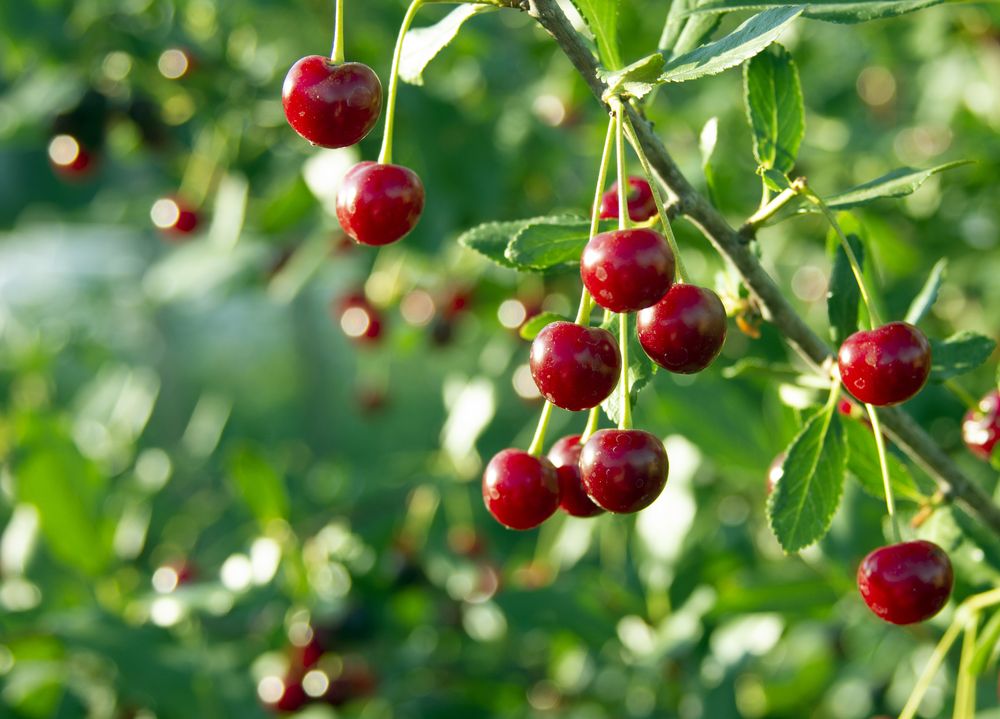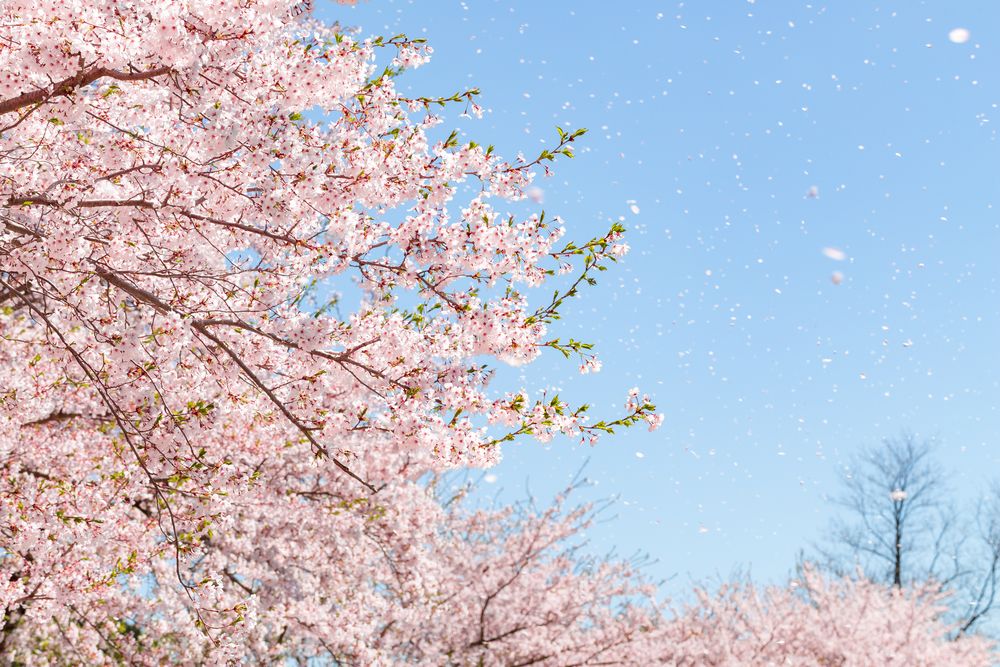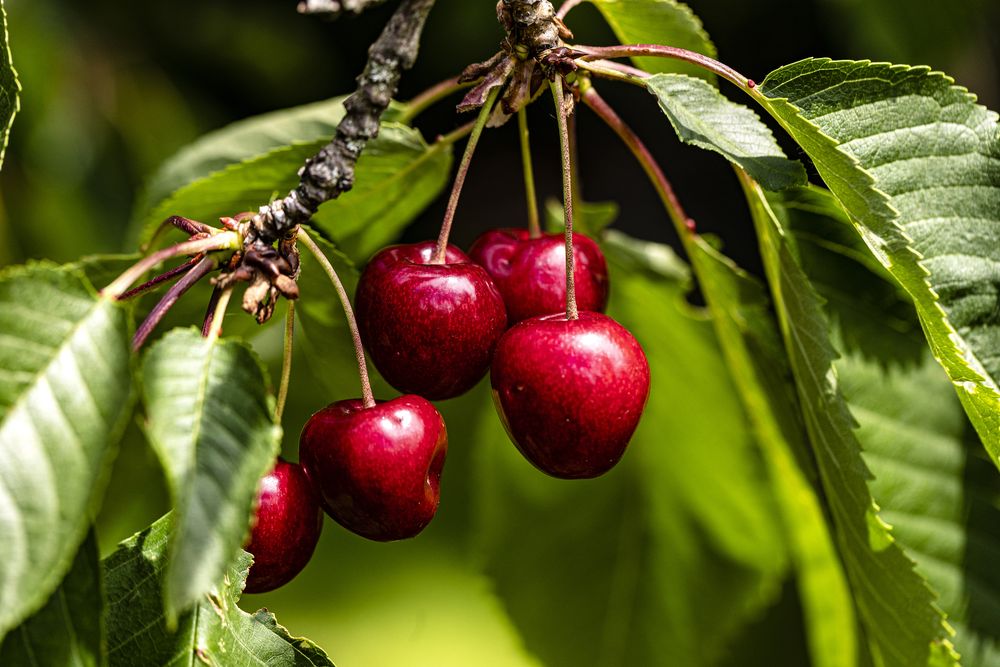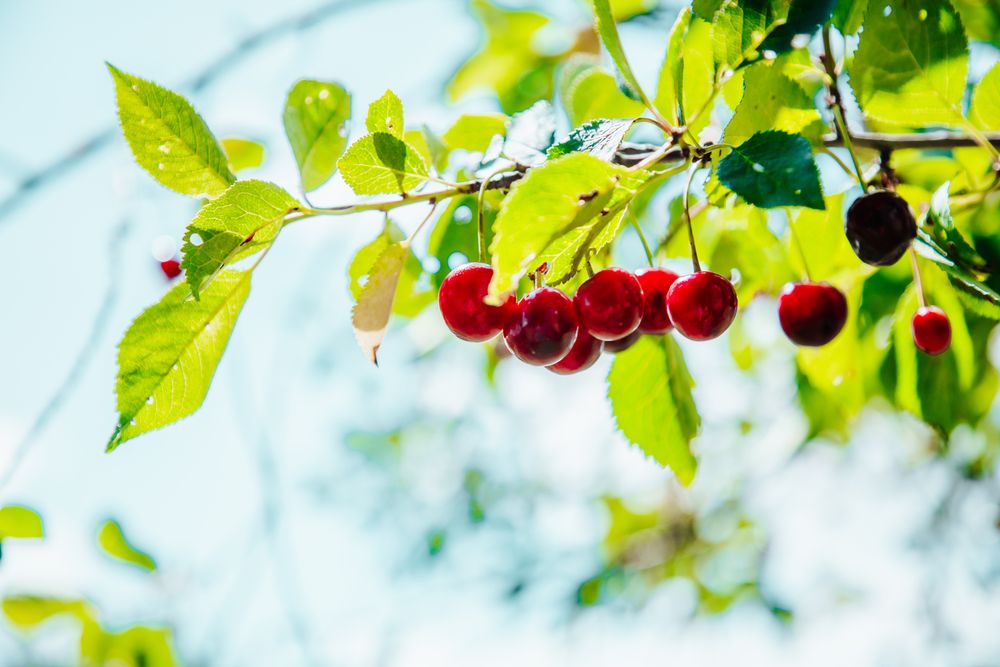Cherry Tree Growing Problems And How To Solve Them
As rewarding as growing a cherry tree is, it does have its problems. To be fair, the cherry tree seems to have more than its fair share of growing problems. The older the tree gets, the more prone it becomes to various bacterial diseases, fungal infections, and general malaise.
In most cases, it pays to be vigilant and act quickly before the infection spreads and spells doom for the harvest that year or worse for the tree itself. But other times there’s little you can do as certain infections have no cure.
We selected 6 of the most common cherry tree growing problems and analyzed each one in detail then offered a solution or two. Hopefully, this helps you take care of the tree better and avoid serious problems when harvesting the delicious cherries.
Cherry Drop Problems
Fruit trees tend to unload some of their developing fruits early on. It’s a natural phenomenon that helps the tree handle the heavy load of fruits and avoid losing a few branches. But when the cherry tree starts dropping the fruits at an alarming rate, you need to step in and investigate.
When the cherry drop problem continues and increases day by day, the issue might have to do with poor pollination. If your tree needs another cherry tree nearby to pollinate it, then it’s up to the bees and butterflies to do a good job and give you a good harvest. A rainy day in the flowering season could interfere with the pollinators’ job and cause the cherries to drop.
Other reasons include irregular watering, poor soil, and diseases.
How to Fix It
Since pollination is the main cause of the excessive cherry drop, we’ll focus on that problem. With the sheer number of flowers on each branch, manual pollination is out of the question. So you’ll need to attract pollinators to your garden with different flowering plants.
If your cherry tree belongs to the self-unfruitful type, you’ll need to plant another cherry tree within a 50-foot radius for cross-pollination. If you don’t have the space or means to have more than one cherry tree, then plant a self-fruitful tree such as Kansas Sweet, Lapins, Skeena, or Governor Wood among others. These cultivars are self-pollinating and have both male and female flowers on the same tree.
Other solutions have to do with the growing conditions and care you provide for the tree. When the tree gets stressed over lack of moisture or nutrients in the soil it tends to shed the undeveloped fruits as a defense mechanism to preserve its limited resources. So ensure the tree is well irrigated and side-dress it with organic compost and aged manure.
Cherry Brown Rot
Most cherry tree cultivars fall victim to cherry brown rot. A fungal disease that wreaks havoc with the fruits and ruins the harvest. Although you can still save your harvest, you’d have to detect the first signs of the infection and take quick action to limit the damage and prevent the spread of the disease. So what are those early signs?
Brown rot starts as tiny brown spots on the blossoms and ripe fruits. Sometimes the spots on the blooms are too small to notice. But what follows is hard to miss. The small twigs and shoots turn brown and wither and die at record speed. This is followed by gummy cankers spreading into the healthy parts of the tree. If you still ignore the problem, the whole tree becomes infected and there’s little you can do to save the harvest.
The spores of the fungus infect trees when humidity is high and air circulation is poor. This often happens after a spell of heavy rain followed by warm weather.
How to Fix It
There are many steps you can take to prevent brown rot from infecting your cherry tree. And even if the spores hit the tree, you can still treat it and salvage the crop. Here are a few recommended solutions.
- Get rid of all infected flowers and fruits as soon as you notice the first symptoms of the disease.
- Clean under the tree and burn all the debris and fallen leaves and blooms to limit the spread of the spores.
- In the winter, give the tree a good pruning. Remove all dead twigs and branches. And cut off branches carrying cankers. Dispose of them safely by burning.
- Spray the free with fungicide in the early spring around the time the first blooms appear.
- Spray a second time when the fruits start to ripen.
- Apply fungicides designed for edible cherry trees to avoid food contamination.
- Always check with a botanist before applying fungicides since they can have a serious impact on the environment.
Cherry Rasp Leaf Control
Cherry rasp leaf disease is a viral infection that infects the cherry tree at any stage of its life. The pathogen is often carried and spread by the dagger nematode. How the nematode reaches your garden depends on your sanitary habits. It could hide in a gardening tool that you lend to a friend or neighbor. Or it might crawl into your garden from an infected garden nearby.
The first sign that something is not well with the tree appears on the underside of the leaves. If you raise a leaf and look underneath it you’ll notice bumps or leafy growths coming out of the surface. These are called enations and might soon develop.
Sometimes the leaves would curl up and die then and there. But if the infected leaf is young it might grow deformed. Usually, the disease starts with the lower branches and spreads upwards.
How to Fix It
As with most viral infections, it’s better to prevent the disease than try to treat it later. For one thing, there’s no cure for the cherry rasp leaf. Once it infects a tree, it will keep appearing year after year as the crop dwindles.
Start by sterilizing any gardening tools you use or lend both before and after using them. This can control nematodes which are the main carrier of the virus. Also, make sure the seeds you buy are clean and virus-free.
Rasp leaf disease also infects peaches, elderberries, and dandelions. So if one plant or tree is infected, uproot it from the garden and burn it. That’s the only way to control the spread of the virus. Don’t try to treat the plant since that will give the virus more time to spread around and infect other plants in the vicinity.
Cherry Cold Requirements
Dormancy is an important phase of the fruit tree’s plant. It allows them to grow flowers and bear fruits in the next spring. And usually, cherry trees have their dormant months in the winter. Oftentimes, dormancy and cold weather are synonyms. If the tree doesn’t get enough cold weather, it won’t have a decent crop next year.
The cold requirements are often measured in hours. Warm climate plants such as strawberries need as little as 200 chill hours. But the cherry tree needs more chill hours than that and some cultivars need longer chill hours than others.
How to Fix It
As a cool-season plant, the cherry tree needs ample time of cold weather before it can come out of dormancy. The temperature usually has to be below 32 degrees and not to go above 40 degrees for long periods of time during dormancy.
If you live in zones 4 to 8, then your cherry tree will need anything between 800 to 1200 chill hours. The more chill hours the tree gets during dormancy the more flowers and fruits it will bear the next season. You can think of tree dormancy as sleep among humans. Once you get enough sleep you wake up full of energy and the desire to conquer the world. For the cherry tree, cold temperatures are necessary for it to enjoy a healthy and rejuvenating dormancy.
If you live in warm zones, consider planting cherry cultivars such as Lapins, Royal Rainier, and Stella which only need fewer than 500 chill hours a year.
Black Leaf Spot
It’s not just the flowers and ripe fruits of the cherry tree that get spots. The leaves too have their fair share of diseases. Xanthomonas pruni is the type of bacteria that causes black leaf spot. It starts as small pale spots on the surface of the leaf. You might even notice them until the spots turn into dark holes with rings around the edges. By that time the disease has spread and taken hold of the tree which makes it hard to treat.
But the disease doesn’t just affect cherry trees. It also infects many fruit trees such as peaches, nectarines, and plums. So if you have an orchard and you grow a lot of stone fruits, chances are the disease could spread from one species to the neighboring tree easily.
As the disease spreads, the infected leaves would fall and cankers grow on the twigs and branches of the tree.
How to Fix It
Black leaf spot is another disease that is hard to treat. Worse still, if you try to treat it, you might inadvertently help it spread to other trees in the area. So it’s always best to prevent the disease and maintain sanitary habits around the garden.
A stressed tree is also susceptible to the disease more than a healthy one. So keep your cherry tree well fed and watered to prevent stress. And although the disease doesn’t cause much damage to the tree or the crop, it’s not a good idea to keep an infected tree that could spread the pathogens to other trees.
Armillaria Root Rot
This is a fungal infection and the fungus that causes it, Armillaria mellea, has many names. Sometimes it goes by honey fungus, mushroom fungus, or simply oak root fungus. It’s the kind of spore that lays in the soil for years and waits for the right tree to infect. Usually, it’s a stone fruit tree that attracts the fungus.
As the name implies, the fungus infects the roots of the trees and spreads from one tree to the next underground. This makes it even more difficult to detect the disease. The late-stage signs include stunted tree growth, yellowing leaves, and fewer and fewer blooms and fruits over the years.
How to Fix It
If your cherry tree gets infected with armillaria root rot, there’s little you can do about it. Even if by a miracle you discover the symptoms on the roots in the early stages of the infection, there’s no cure at hand to treat it. As it is, you only notice the signs of the infection a year or so later when the tree becomes stunted.
Remove the infected tree with the entire root system and burn it. Then avoid planting any trees or plants in the infected area. The roots of the new plant might infect other trees even if the new plant itself is not infected. That’s how vicious this fungus is.



